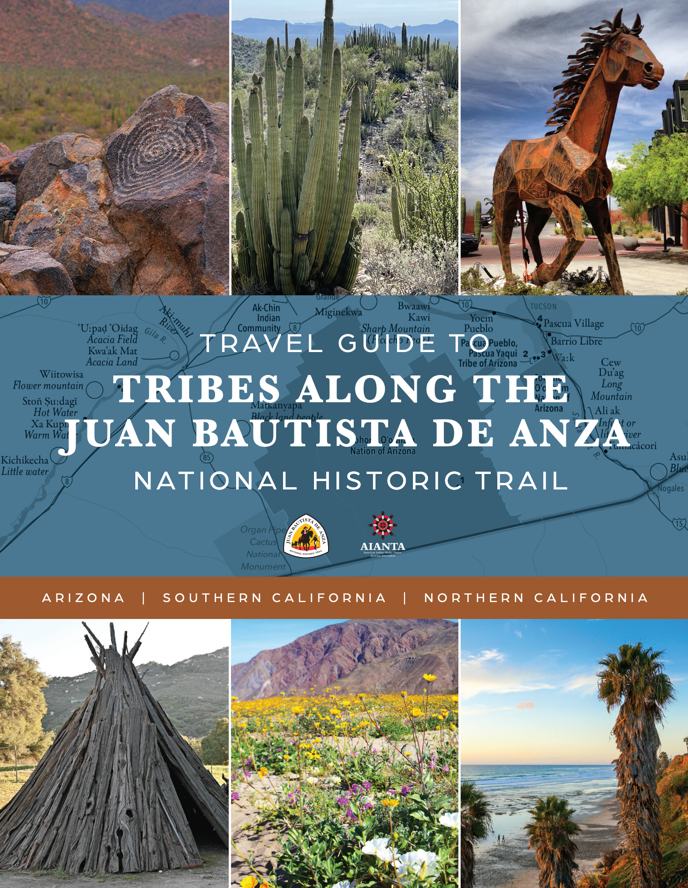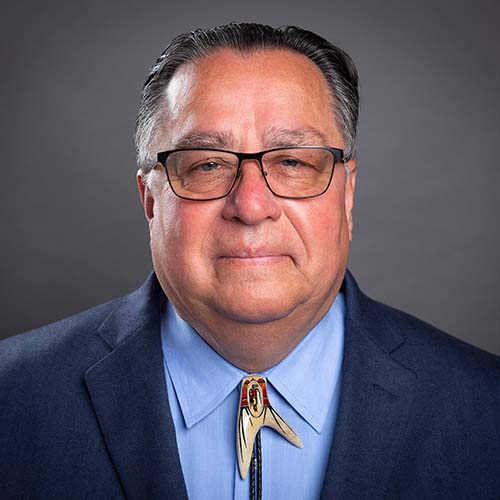
- Details
- By Native News Online Staff
After five years in the making, the American Indian Alaska Native Tourism Association (AIANTA) and the National Park Service’s Juan Bautista de Anza National Historic Trail Program—supported by the Arizona Office of Tourism and Visit California—on Monday officially launched The Travel Guide to Tribes Along the Juan Bautista de Anza National Historic Trail.
This groundbreaking guide highlights locations along the Anza Trail where visitors are welcomed by tribal communities and invited to discover the rich history, heritage, and living cultures of Indigenous peoples in Arizona and California.
The guide tells a powerful story of resilience and perseverance. The Anza expedition included families of Indigenous, African, and European descent who journeyed in search of new opportunities in the Southwest, bringing with them their languages, customs, and traditions. However, this cultural convergence—often marked by conflict—profoundly affected the Native peoples along the trail.Spanning 88 pages, the guide features traditional Indigenous place names that affirm the deep and enduring connections Native communities have to these lands, which have been their homelands since time immemorial. Travelers will also find three fold-out maps that highlight these place names, offering a deeper, more respectful way to engage with the trail and its history.
“As AIANTA traveled the Juan Bautista de Anza National Historic Trail we asked tribes what they wanted travelers to know and they said, ‘We are still here,’” said AIANTA CEO Sherry L. Rupert (Paiute/Washoe). “This historic guide is a testament to the resilience and strength of the Indigenous peoples of California and Arizona who, despite the violence, displacement and being ignored, are still here and welcome visitors to their lands to share their food, art and culture. It’s an honor to have collaborated with the National Park Service Juan Bautista de Anza National Historic Trail Program, the Arizona Office of Tourism and Visit California on this monumental project that will be enjoyed for generations to come,” Rupert said.
Over the course of five years, the AIANTA team undertook extensive outreach to bring this guide to life. Their efforts included engaging with tribal leaders across multiple states, fostering relationships with local, state, and federal recreational sites near tribal lands along the trail, and conducting site visits to photograph key attractions and capture the voices of tribal elders, historians, and artists on film. This historic guide features contributions from 11 federally recognized tribes in Arizona, along with 49 federally recognized and 23 unrecognized tribes in California.“The National Park Service is grateful for the partnership with AIANTA,” said Naomi Torres, Superintendent, National Park Service Juan Bautista De Anza National Historic Trail.
“The well-respected AIANTA team brought great knowledge and experience to this project and was instrumental in creating this outstanding presentation of indigenous presence along the historic route.”
The Juan Bautista de Anza National Historic Trail connects Indigenous history, art, culture, and outdoor recreation along a 1,200-mile corridor from Nogales, Arizona, to the San Francisco Bay Area. Travelers can visit tribal museums and learn about the history, struggles and continued existence of the tribes, to include:
- Himdag Ki: Tohono O’odham Nation Cultural Center and Museum
- Him Dak Eco-Museum at the Ak-Chin Community
- The San Carlos Apache Cultural Museum
- Yoemem Tekia Cultural Center and Museum at the Pascua Yaqui Tribe
- Old Pascua Museum and Yaqui Cultural Center
- San Carlos Apache Cultural Museum
- Nohwike’ Bágowa, the White Mountain Apache Cultural Center and Museum
- Fort McDowell Yavapai Nation Cultural Center and Museum
- Huhugam Ki Museum at the Salt River Pima-Maricopa Indian Community
- Cocopah Museum and Cultural Center
- Quechan Indian Tribe Cultural Center
- Colorado River Indian Tribes Museum
- Sycuan Cultural Center and Museum
- Barona Cultural Center & Museum
- Kumeyaay-Ipai Interpretive Center at Pauwai
- The Cabazon Band of Mission Indians Cultural Museum
- Agua Caliente Cultural Museum
- Malki Museum and Temalpakh Garden
- Pala Band of Mission Indians’ Cupa Cultural Center
- Rincon Band of Luiseño Indians’ Wasxayam Pomki Museum
- Santa Ynez Chumash Museum and Cultural Center
Travelers can view the Tribes Along the Juan Bautista de Anza National Historic Trail digital guide at www.aianta.org/anza-trail/ and can obtain a printed copy of the guide from AIANTA for a postage and handling fee.
More Stories Like This
Native News Weekly (August 25, 2024): D.C. BriefsUS Presidents in Their Own Words Concerning American Indians
Ethics Complaint Alleges Former Navajo Nation Chief of Staff Accepted Gifts From Contractor
Monday Morning (December 14, 2025): Articles You May Have Missed This Past Weekend
Senators Demand Accountability Amid Reports of ICE Questioning Native Americans
Help us defend tribal sovereignty.
At Native News Online, our mission is rooted in telling the stories that strengthen sovereignty and uplift Indigenous voices — not just at year’s end, but every single day.
Because of your generosity last year, we were able to keep our reporters on the ground in tribal communities, at national gatherings and in the halls of Congress — covering the issues that matter most to Indian Country: sovereignty, culture, education, health and economic opportunity.
That support sustained us through a tough year in 2025. Now, as we look to the year ahead, we need your help right now to ensure warrior journalism remains strong — reporting that defends tribal sovereignty, amplifies Native truth, and holds power accountable.
 The stakes couldn't be higher. Your support keeps Native voices heard, Native stories told and Native sovereignty defended.
The stakes couldn't be higher. Your support keeps Native voices heard, Native stories told and Native sovereignty defended.
Stand with Warrior Journalism today.
Levi Rickert (Potawatomi), Editor & Publisher


